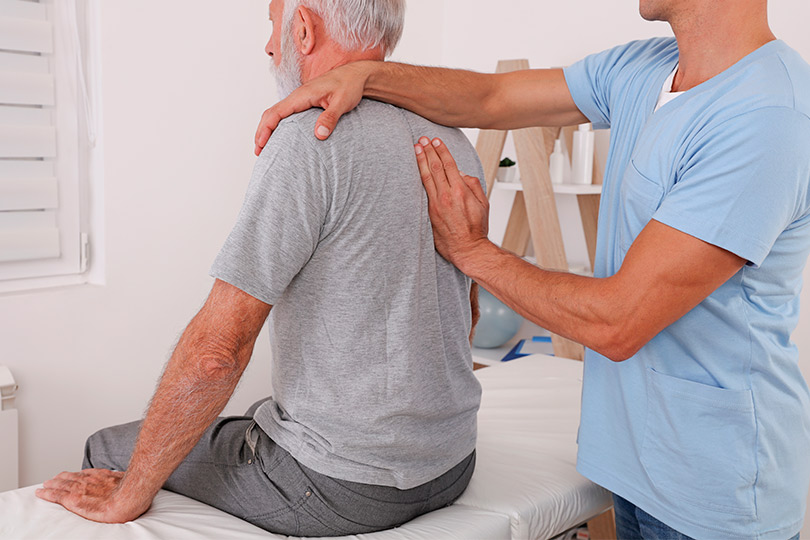Fall Prevention: Spinal Health Tips for Seniors
A healthy spine serves as the foundation for an active, independent lifestyle in your golden years. As we age, the cumulative effects of decades of movement, posture habits, and natural wear begin to manifest as discomfort and limited mobility. For seniors, maintaining optimal spinal health becomes increasingly essential for overall well-being and quality of life.
The aging process naturally affects your spine in several ways:
- The muscles and ligaments supporting your vertebrae gradually weaken, making everyday movements like bending, twisting, and lifting more challenging.
- The lower back often compensates for a decrease in mobility by taking on additional strain, which can potentially lead to chronic pain conditions.
- Many seniors develop a fear of movement after experiencing back pain, creating a cycle where reduced activity leads to increased stiffness and further discomfort.
The connection between spinal health and balance is particularly significant for older adults. Your spine literally keeps you upright, and when it’s compromised, your stability and coordination suffer. This direct relationship makes spinal health a significant factor in preventing falls, one of the most serious health risks for seniors.
Several age-related spinal conditions contribute to balance issues and increase fall risk among seniors. Understanding these conditions can help in recognizing symptoms early and seeking appropriate treatment:
- Degenerative Disc Disease: The cushioning discs between vertebrae naturally lose water content and elasticity with age, potentially leading to stiffness, pain, and reduced height.
- Spinal Stenosis: Narrowing of the spinal canal that often develops with age, causing pressure on nerves and resulting in pain, numbness, or weakness in the back and legs.
- Osteoarthritis: Wear and tear on spinal joints that can cause inflammation, pain, and stiffness, particularly after periods of inactivity.
- Osteoporosis: Decreased bone density that makes vertebrae vulnerable to compression fractures, even from minor strains or falls.
- Reduced Flexibility: Stiffening of spinal ligaments and joints that limits range of motion and makes daily activities more difficult.
Recognizing these common spinal challenges is the first step toward maintaining mobility and independence. With proper care and attention, many spine-related issues can be prevented or effectively managed, allowing seniors to continue enjoying an active lifestyle with confidence and comfort.
Preventive Measures to Maintain Mobility This Fall

- Mind your posture and ergonomics: – Maintain a natural “S” curve in your spine while sitting to distribute weight evenly. Take standing breaks every 30 minutes to relieve spinal pressure. Arrange your workspace with your computer screen at eye level and use a chair that supports your lower back.
- Strengthen your spine with targeted exercises: Practice the “big three” exercises regularly: curl-ups, side planks, and bird-dogs to engage all core muscles and improve spine stability. Start with 5 repetitions of each exercise and gradually increase as you build strength.
- Fall-proof your environment: Remove tripping hazards like loose rugs and clutter. Install grab bars in bathrooms and ensure adequate lighting throughout your home. Wear supportive, non-slip footwear even indoors to maintain proper alignment and reduce the risk of falling.
Treatment Options: From Conservative Care to Advanced Alternative Therapies

As fall arrives, seniors face an increased risk of spine-related discomfort due to cooler weather and reduced activity. Protecting spinal health during this season is fundamental. Fortunately, a wide range of treatment options, from conservative approaches to advanced therapies, can help older adults maintain mobility, reduce pain, and prevent falls.
- Conservative Treatments
- Physical therapy focuses on spine stability through core strengthening exercises like the “big three”: curl-ups, side planks, and bird-dogs, which engage all important muscles needed for a stable spine
- Over-the-counter medications like NSAIDs can reduce inflammation, while prescribed muscle relaxants help with severe muscle tension
- Lifestyle modifications, including daily stretching, maintaining proper posture, and regular walking breaks, can significantly improve spine health
- Minimally Invasive Interventions
- Epidural steroid injections deliver anti-inflammatory medication directly to inflamed nerves, providing relief for conditions like herniated discs and spinal stenosis
- Nerve blocks interrupt pain signals from specific nerves, offering relief that can last weeks to months
- Radiofrequency ablation uses thermal energy to temporarily disconnect nerves, providing 9-12 months of pain relief for many patients
- Advanced Treatments
- Spinal cord stimulation uses a small implanted device to send mild electrical impulses to the spinal cord, effectively blocking pain signals before they reach the brain, ideal for those with chronic back pain that hasn’t responded to other treatments
- Regenerative medicine approaches like platelet-rich plasma therapy stimulate natural healing and tissue repair
- When to See a Specialist
- Consider consulting a spine specialist when pain persists despite conservative treatments or is accompanied by symptoms like radiating pain down the legs
- A specialist can provide a comprehensive assessment and develop a personalized treatment plan that addresses the root cause of your specific condition
Taking Action: Schedule Your Spinal Health Assessment

Prioritizing spinal health becomes more important with age, especially during the fall season when reduced activity and cooler weather can intensify discomfort. A spinal health assessment is the first step toward prevention, early detection, and effective treatment, helping seniors protect mobility, maintain independence, and enjoy a more active lifestyle.
- Regular spinal health check-ups are vital for seniors: Early detection of spine issues can prevent more serious problems later. A baseline bone health assessment helps identify conditions like osteoporosis before they lead to fractures or chronic pain. Timely professional evaluation offers significantly better outcomes than waiting until pain becomes debilitating.
- Know what to expect during your assessment: A comprehensive spinal health evaluation typically includes a detailed medical history review, physical examination of posture and movement, and possibly diagnostic imaging. Your specialist may assess your balance, flexibility, and muscle strength to develop a complete picture of your spinal health. This information forms the foundation for personalized treatment recommendations.
- Take the first step toward better mobility today: Don’t wait for pain to limit your activities. Proactive spinal care helps maintain your independence and quality of life. A pain management expert can evaluate your condition and recommend appropriate interventions tailored to your specific needs. Schedule a consultation to benefit from specialized expertise and the latest treatment options.
Discover a new path to pain relief with Altus Spine and Joint Pain Care. Our cutting-edge, minimally invasive treatments target the root cause of your discomfort, offering lasting solutions without the need for surgery.
Whether you’re dealing with chronic back pain, joint and mobility issues, or nerve pain, our expert team provides personalized care tailored to your needs. Take the first step toward a pain-free life and improved mobility. Learn more about our innovative treatments and schedule a consultation today!





